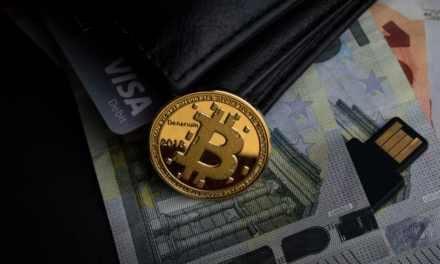The world is on the cusp of a technological revolution with the advent of 6G networks. Fact.MR, a market research and competitive intelligence provider, reveals that the global 6G market is set to boom to a valuation of US$ 300 billion by 2033, expanding rapidly at 50% CAGR from 2023 to 2033. This article will delve into what 6G networks are and how they are expected to revolutionize the world of communication.
What are 6G networks?
With each generation of communication technology, the focus of the network changes. The 2G and 3G eras were focused on human-to-human contact via voice and text. The 4G era represented a fundamental shift toward huge data consumption, whereas the 5G era has shifted its attention to linking the Internet of Things (IoT) and industrial automation systems. In the 6G age, the digital, physical, and human worlds will fluidly merge to trigger extrasensory experiences. Intelligent information systems will be paired with robust computation skills to make humans infinitely more efficient and to reinvent how we live, work, and care for the earth.
A 6G network is a cellular network that runs in untapped radio frequencies and employs cognitive technologies such as AI to provide low-latency, high-speed communication at a rate many times faster than fifth-generation networks. Increasing improvements in next-generation networks are expected to contribute to the overall growth of the 6G market.
The benefits of 6G networks
Increasing internet use has led to a sharp rise in the amount of information. All data and information are transmitted via communication networks. 6G is expected to have at least 20 times the wide-area capability of 5G. Furthermore, the 6G user-experienced data rate, which is expected to exceed 1,000 Mbps, is ten times faster than the 5G user-experienced data rate. Due to the numerous benefits, several countries worldwide are moving toward 6G.
Market Study
Key Takeaways from the Market Study:
The global 6G market stands at US$ 5 billion in 2023.
Worldwide demand for 6G is projected to swell at a CAGR of 50% during the forecast period (2023 to 2033).
The market for 6G products and services is forecasted to garner US$ 300 billion by 2023.
North America is estimated to lead the global market over the next ten years.
North America, led by the United States, is predicted to account for a major share of the global 6G market owing to the presence of key companies, favorable government efforts, and various other factors.
Competitive Landscape
Despite the fact that 6G is yet to become a reality, the market appears to be tremendously competitive. Although there are presently a few 6G technology and service providers, the industry seems to be fragmented due to large expenditures and ongoing research into making 6G data transmission successful with improved distance records.
Major telecom companies are developing wireless communication technology to support cellular data networks. Simultaneously, mobile device manufacturers are investigating the feasibility of building 6G compatible devices capable of wireless transmission as well as the reception of 6G THz data across a longer distance outdoors. Moreover, many start-ups are spouting up in the worldwide market.
Key Players
Samsung Electronics: In January 2022, Samsung Electronics partnered with Korea University to set up a department devoted to the study and development of 6G.
The University of Texas at Austin: The University of Texas at Austin opened a 6G research center in July 2021, with the cooperation of key industry firms such as Samsung, AT&T, and Qualcomm.
Apple: Apple recruited engineers in June 2021 to work on the next generation of wireless technologies, 6G.
FAQs
Q: What is a 6G network?
A: A 6G network is a cellular network that runs in untapped radio frequencies and employs cognitive technologies such as AI to provide low-latency, high-speed communication at a rate many times faster than fifth-generation networks.
Q: What are the benefits of 6G networks?
A: 6G is expected to have at least 20 times the wide-area capability of 5G. Furthermore, the 6G user-experienced data rate, which is expected to exceed 1,000 Mbps, is ten times faster than the 5G user-experienced data rate.
Q: What is the estimated market size for 6G by 2033?
A: The market for 6G products and services is forecasted to garner US$ 300 billion by 2033.
Conclusion
The growth of the 6G market is projected to be immense, with the market size expected to reach US$ 300 billion by 2033. The benefits of 6G networks are enormous, including high-speed communication, low latency, and increased wide-area capability. The race to develop 6G networks is already underway, with major telecom companies, mobile device manufacturers, and startups investing heavily in research and development. The world is on the cusp of a technological revolution, and 6G networks are set to revolutionize the way we live, work, and communicate.





